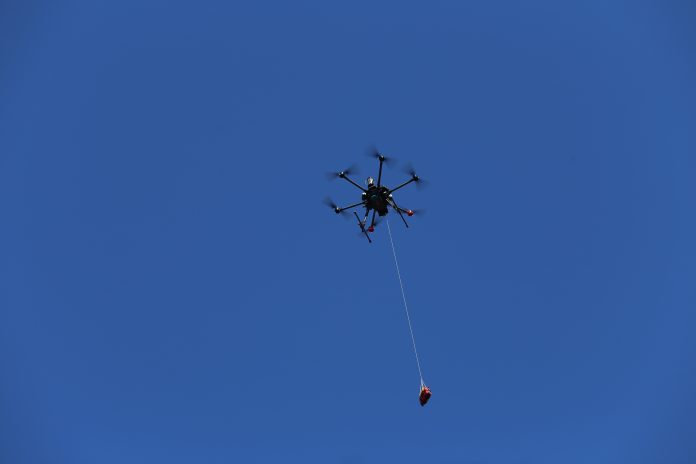
In a first-of-its-kind pilot project, drones have proved successful in delivering defibrillators to cardiac emergencies.
The study, carried out by Karolinska Institutet in Sweden, found that most of the drones dispatched to real-life alerts of suspected cardiac arrest arrived on target and ahead of the ambulance.
The findings have been published in the European Heart Journal and were presented at the European Society of Cardiology congress.
Response time to a sudden cardiac arrest is crucial, and currently only one in 10 people survive an out-of-hospital cardiac arrest in the UK. As stated by the British Heart Foundation, early cardiopulmonary resuscitation (CPR) and defibrillation can double the chances of surviving a cardiac arrest that occurs outside of the hospital. It is therefore of vital importance that assistance arrives at the scene of the cardiac arrest as soon as possible.
As part of a drive to improve response times for cardiac emergencies, researchers at Karolinska Institutet, teamed up with the national emergency operator SOS Alarm, Region Västra Götaland, and drone operator Everdrone AB to investigate the use of drones to deliver defibrillators alongside the regular dispatching of ambulances. The study, which was carried out in the summer of 2020 in the cities of Gothenburg and Kungälv in western Sweden, describes an integrated method where emergency operators, drone pilots, and air traffic control worked collaboratively to facilitate the dual response.
Lead researcher Andreas Claesson, Associate Professor at the Center for Resuscitation Science at the Department of Clinical Science and Education, Södersjukhuset, Karolinska Institutet, said: ”This is the first time in the world that a research group can report results from a study where drones flew defibrillators to the location of real-life alerts of suspected cardiac arrest.”
Drones arrived before the ambulance in most cases
During the four-month study period, the drones were dispatched in response to 12 out of 53 alerts of suspected cardiac arrest, and successfully delivered an automated external defibrillator (AED) to the site in 11 of those cases (92%). In seven cases (64%), the drones arrived before the ambulance, with a median time benefit of one minute and 52 seconds. The drones travelled a median distance of 3.1km without causing any disturbances or damage to the surrounding area. No drone-delivered defibrillators were attached to the patients before the ambulance arrived.
First-author Sofia Schierbeck, PhD student at the Center for Resuscitation Science at the Department of Clinical Science and Education, Södersjukhuset, Karolinska Institutet, said: “Even if none of the AEDs were used this time, our study shows that it is possible to use drones to transport defibrillators in a safe way and with target precision during real-life emergencies.
“A precondition for their future use is that the dispatcher takes initiative and instructs people on site to quickly collect and attach the AED in order to help the person with cardiac arrest.”
The researchers note that further improvements are needed to increase dispatch rate and time benefits. For example, in 2020 the drones could not fly when it was dark, rainy, or in winds of eight meters per second or more. The software system was also pre-set to avoid routes above densely populated areas, which meant that some alerts were geographically out of range.
Areas for improvement
Andreas Claesson said: “Since this study was completed, we have identified several areas of improvement.
“In April this year, we began a follow-up study with a more optimised system. In that study, we want to test if we can use the drones in more alerts and reduce the response time further and thereby increase the time benefit as compared to the ambulance. Every minute without treatment in the early stages reduces the chance of survival by around 10%, and that is why we believe this new method of delivery has the potential to save lives.”
The research was funded by the Swedish Heart and Lung Foundation.
























